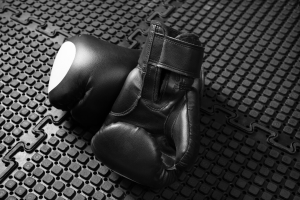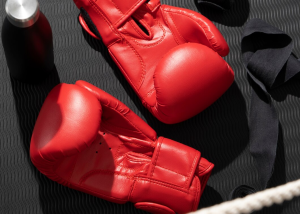During several-hour fights, people hit each other with bare hands, resulting in broken bones and facial bleeding. The sport of boxing took its most basic form during that time. People today use gloves because they represent centuries of fighting experiences with both positive and negative changes. Learning about gear history makes it easier to identify what strengths each fighter brings to the fight.
The Bare-Knuckle Era
Before gloves, fights were savage. Fights took place without limits of rounds or weight categories while delivering plain punches. The fight was not about flashy techniques but focused on staying alive. Matches could last over 70 rounds. Today, fans follow the sport not just in arenas but also through platforms like online casino site BD, where the action continues in a different form. Fighters needed to evaluate their punches carefully because they faced regular hand damage. They targeted the body areas because landing punches to the head would damage their hands.
During the first decades of the 1800s, Tom Cribb and Jem Mace became famous boxing legends. But with fame came violence. Bouts had no rules, and many fighters could not survive physical injuries. People participated in illegal boxing matches in hidden fields and pubs. Yet people bet heavily. The dangerous experience attracted large crowds who supported the matches secretly.

The Introduction of Gloves
The sport evolved when the Marquess of Queensberry Rules were introduced in 1867. Gloves became required at matches, which established new rules for boxing. The new requirement of gloves transformed both hand safety and fighting techniques:
- The initial boxing gloves brought three significant benefits to ring battles.
- The gloves helped decrease injuries to the face, mainly cuts and eye damage.
- The fighters survived more rounds because their hands suffered fewer injuries.
- Referee intervention became necessary when new rules required the proper implementation of matches.
- People accepted boxing as a legal and high-class activity across multiple nations.
Once boxers wore protective gloves, they needed more than sheer strength to succeed. Boxing has developed new value through better methods and faster actions. Updates and highlights appear instantly on platforms like Melbet Instagram, connecting fans to every punch. More fans and prize money attracted people who wanted to wager on the outcomes.
A Turning Point in the 20th Century
During the 1900s, boxing gloves shifted from simple padding to scientific objects, revolutionizing the sport. Innovation exploded. Gloves evolved from protection equipment into tactical items. This period created the modern standards for fight evaluation and gambling activities.
Padding and Shape Innovations
Gloves lacked design quality at the beginning stage, which made them helpful for hand protection but harmful for facial defense. That changed fast. In the 1920s, companies started using foam layers for their products. The thumb attachment was added to protect the eyes during fights. The device was added to the glove to prevent joint damage from overextension.
In the middle of the century, gloves showed distinct features, including knuckle guards, wrist reinforcement, and finger padding. The shape became tighter and rounder. Punchers performed their strikes with more speed and precision. Because injuries decreased, more fights took place, increasing betting pool earnings. The transformation of one fighting glove model helped bettors predict the contest outcome.
Weight Classification in Gloves
Before official rules came into force, fighters could choose any type of gloves. These rules produced hits that were not equal and led matches to end unpredictably. During the 1940s, both boxing commissions began to regulate glove weights for all fights. A flyweight would struggle to compete with heavyweight equipment because it would create unfair conditions.
Today, boxers use gloves weighing 8 and 16 ounces, directly impacting how fast they move, how powerful they punch, and how tired they get. Light gloves go faster yet shield the hands with less protection. Heavier gloves decrease punching speed yet make punches softer when they hit targets. Skilled bettors always take glove weight into account as a crucial indicator.

Modern Materials and Technology
Contemporary glove designs feature foams with a tight density structure plus several gel and shock-absorbing components. These gloves contain memory foam material that matches the shape and form of the fighter’s hand. The new gloves use synthetic materials that survive better against the weather and are easier to manage. Some gloves use premium microfiber leather because this material resists breaking when pressure builds up.
The glove design lets airflow while the fabric absorbs sweat to maintain grip reliability. The new fast-access Velcro fasteners replaced traditional laces in many gloves. Fighters who receive custom-made gloves reduce their injuries while fighting at their most substantial level.
From Protection to Performance
Instead of serving as protective tools, gloves now provide additional performance benefits. The proper fighting gloves improve movement speed while keeping form steady and enable athletes to reach new performance levels. Punches function on muscle and scientific elements—each betting person who recognizes an advantage.
